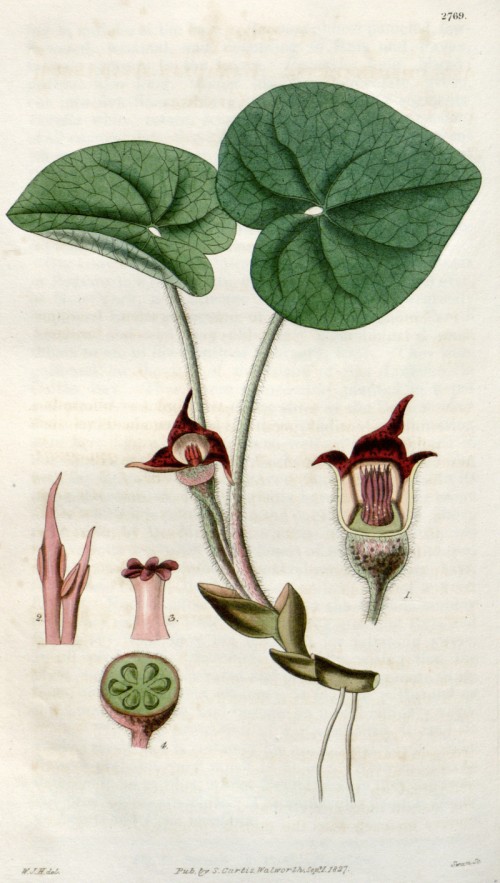Dies ist eine alte Version des Dokuments!
Asarum canadense L. - Aristolochiaceae - American wild ginger, Canada snakeroot, Kanadische Haselwurz
Prostrate evergreen perennial, up to 10cm high, native to eastern North America; slender rhizome with the smell of ginger; stems short, developing in spring, each branch with one leave; leaves dark green, reniform (kidney-shaped), downy at both sides, 5-20cm across; flowers on short stalkes near ground, solitary, dark purple-brown, campanulate; fruit a coriaceous, 6-celled capsule.
„Native Americans used Asarum canadense medicinally to treat flux, poor digestion, swollen breasts, coughs and colds, typhus and scarlet fever, nerves, sore throats, cramps, heaves, earaches, headaches, convulsions, asthma, tuberculosis, urinary disorders, and venereal disease; as a stimulant, a seasoning, and a charm; and to strengthen other herbal concoctions and heighten appetite (D.E. Moerman 1986).“
http://www.efloras.org/florataxon.aspx?flora_id=1&taxon_id=233500168
„A pentane extract from the rhizomes of Asarum canadense was separated first by means of steam distillation, and then by column and gas chromatography. From the steam-volatile oil the following constituents were isolated (percentages are shown in parentheses): methyleugenol (44.5), linalyl acetate (41.1), geraniol (7.4), linalool (5.3), limonene (0.8), a-terpineol (0.4), bornyl acetate (0.3), aristolone (0.1), elemicin (0.1), 2, 3,4, 5-tetramethoxyallylbenzene (0.05), 2, 4-dimethoxycinnamaldehyde (0.05), and two unidentified compounds (0.01 each). The steam-nonvolatile residue contained some of the above and also β-sitosterol.“
[Constituents of the rhizome of Asarum canadense., Bauer, L., Bell, C.L., Gearien, J.E., Takeda, H., Journal of Pharmaceutical Sciences, 56(3), 1967, 336-343]

Curtis’s Botanical Magazine, vol.54 [ser.2, vol.1] t.2769 (1827) [W.J.Hooker]
http://plantgenera.org/species.php?id_species=95831
